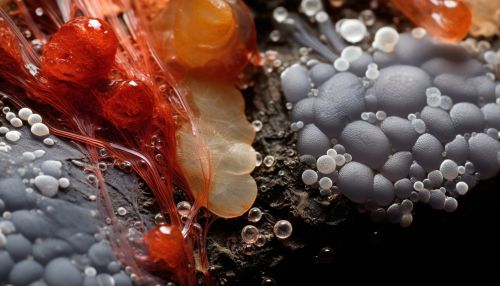Mechanisms of Microbial Biomineralization
Introduction
Microbial biomineralization is a biological process that involves the interaction of microorganisms, particularly bacteria, with minerals. Microorganisms have been found to play a crucial role in the formation, transformation, and dissolution of minerals, a process known as biomineralization. This process is not only significant in the geological cycle but also has potential applications in various fields such as environmental remediation, bioenergy production, and nanotechnology.
Mechanisms of Microbial Biomineralization
Microbial biomineralization occurs through a variety of mechanisms, including biologically induced mineralization (BIM) and biologically controlled mineralization (BCM).
Biologically Induced Mineralization
In biologically induced mineralization, the microorganisms do not have direct control over the mineral formation process. Instead, the mineralization occurs as a result of the microbial metabolic activities that alter the surrounding environment's chemical conditions. For instance, the microbial reduction of sulfate leads to the formation of sulfide minerals.
Biologically Controlled Mineralization
On the other hand, biologically controlled mineralization involves direct control by the microorganisms over the nucleation and growth of the minerals. This is often observed in the formation of magnetosomes in magnetotactic bacteria and the production of calcium carbonate crystals by some species of cyanobacteria.
Role of Microorganisms in Biomineralization
Microorganisms, especially bacteria, play a vital role in the biomineralization process. They can influence mineral formation through their metabolic activities, the production of organic and inorganic compounds, and their physical interactions with mineral surfaces.
Metabolic Activities
Microbial metabolic activities can induce changes in the surrounding environment's pH, redox potential, and concentration of mineral-forming ions, thereby facilitating mineral precipitation. For example, the microbial reduction of iron and manganese results in the formation of iron and manganese minerals.
Production of Organic and Inorganic Compounds
Microorganisms can also produce organic and inorganic compounds that can act as templates or nucleation sites for mineral formation. For instance, the extracellular polymeric substances (EPS) produced by bacteria can bind to metal ions, leading to the formation of metal-EPS complexes that can serve as nucleation sites for mineral precipitation.
Physical Interactions with Mineral Surfaces
Furthermore, microorganisms can physically interact with mineral surfaces, promoting mineral dissolution or precipitation. For example, bacteria can attach to mineral surfaces and produce organic acids that dissolve the minerals, releasing the mineral-forming ions into the solution.
Applications of Microbial Biomineralization
The ability of microorganisms to mediate mineral formation has potential applications in various fields.
Environmental Remediation
In environmental remediation, microbial biomineralization can be used to immobilize toxic metals and radionuclides, thereby preventing their migration and reducing their bioavailability. For example, the microbial reduction of uranium can lead to the precipitation of uranium minerals, effectively immobilizing the uranium and preventing its migration in the environment.
Bioenergy Production
In bioenergy production, microbial biomineralization can be exploited for the production of biofuels and bioelectricity. For instance, the microbial reduction of iron can be coupled with the oxidation of organic matter to produce electricity in microbial fuel cells.
Nanotechnology
In nanotechnology, microbial biomineralization can be used for the synthesis of nanomaterials with controlled size and shape. For example, the biomineralization of gold by bacteria can result in the formation of gold nanoparticles with various shapes and sizes, which can be used in various applications such as catalysis and drug delivery.
See Also


